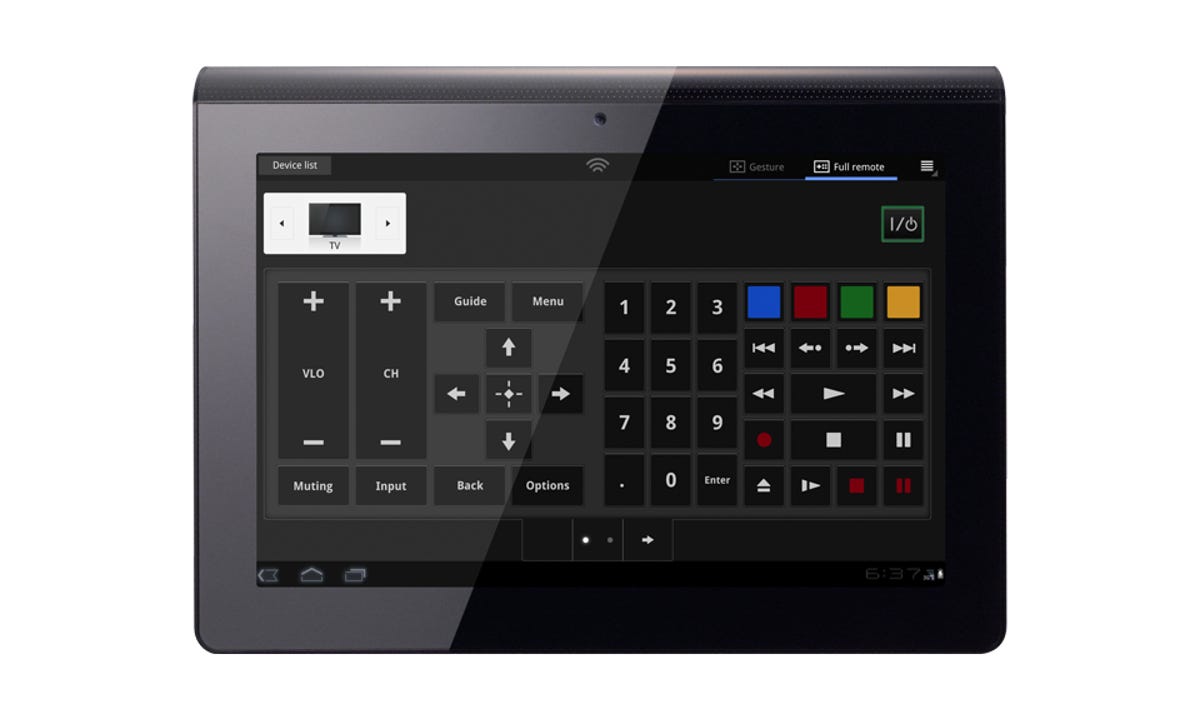

Now playing:
Watch this:
Sony Tablet S
2:05
Sony is one of the last major manufacturers to jump into the tablet wars, but at least it’s arriving in style. Today, Sony published all the details surrounding its two planned Android 3.1 tablets, originally codenamed S1 and S2.
For the first bit of business, the official names have been figured out. The larger of the two tablets with the 9.4-inch screen will be called the Sony S tablet, while their folding tablet made from two 5.5-inch screens will be called the Sony P tablet. The P, apparently, stands for “pocket.”
Sony debuts S1 and S2 Android Honeycomb tablets (photos)






+9 more
The S tablet is due in mid-September priced at $499 (16GB) and $599 (32GB). These models only connect to the Internet over Wi-Fi, though international customers will see a version that includes a SIM slot for cellular network compatibility.
Pricing and availability for the Sony P tablet is more nebulous. Since the device will come to market through AT&T as a 4G compatible tablet, the decision on timing and pricing rests on the carrier’s shoulders.
Additional Sony IFA announcements
Sony debuts Android-based Walkman prototype
Sony Reader Wi-Fi puts Kindle in its sights
Hands-on with Sony’s new Vaio SE 15-inch laptop
Sony debuts 3D OLED head-mounted display
Both tablets share many of the same specs. Both run on an NVIDIA Tegra 2 processor. Sony states that the S tablet uses 1GB of system RAM, but neglects to disclose the RAM for the P (possibly an oversight). Both include front-facing VGA cameras and a 5-megapixel camera on the back that takes surprisingly good photos (see gallery below). Both offer a full-size SD card slot, Micro-USB sync, Bluetooth 2.1+EDR wireless, and 802.11 b/g/n Wi-Fi (though the P also offers a 4G cellular data connection).
Sony S tablet camera test (photos)






+8 more
Competing in today’s tablet market takes more than great specs. In fact, looking at specs alone there’s very little to distinguish Sony’s tablet from the rest. What makes both of these tablets so interesting is how Sony has put its own unique spin on them.
Sony’s proposition
Sony’s tablets are uniquely its own. Once you get past the unique designs of both tablets, you can see Sony’s attention to detail running throughout their subtle Android optimizations, software selections, and feature refinements.
Take as granted that you get Google’s full Android 3.1 experience. Everything from Gmail to Google Talk (with video chat) comes ready to go right out of the box. On top of that you get access to Sony’s Video Unlimited service, with download and rental options from all the major studios. You get a 6-month free basic membership to Sony’s Music Unlimited service (a revamped Qriocity). Sony’s own Reader software is also included, alongside Google Books. And last but not least, both of Sony’s tablets are PlayStation-certified, and run emulator software that allows them to play select PSone and PSP game titles. The original Crash Bandicoot comes preinstalled on both tablets. The S tablet also gets a version of Pinball Heroes.
Sony has also included some interesting options for pushing media content off these tablets onto DLNA-compatible TVs, speakers, or PCs (and not just Sony’s). You can think of it as Sony’s answer to Apple’s AirPlay media streaming, only more broadly compatible with third-party technology.
Also playing into Sony’s focus on the tablet as a living-room entertainment device is the inclusion of an IR blaster and universal remote app on the S tablet. Having demoed this feature personally, we can safely say that it makes the remote functionality of the Vizio tablet look like amateur hour. Essentially, Sony cannibalized its own $250 HomeShare premium universal remote and slapped the same software inside the S tablet. The result is a graphically rich remote that you might actually want to use.

Sony
In that same spirit of borrowing from Sony’s best technology to make a compelling tablet, they’ve borrowed the Exmor image technology from its digital cameras to make a tablet camera that’s actually worth a damn. The touch-screen panels on both tablets take advantage of the TruBlack technology used on its Bravia HD TV sets, providing richer contrast and minimizing reflections between the LCD and the glass above it. Sony even threw in the Dash’s Chumby widgets, transforming the tablet into a high-tech photo frame/widget display when the device is placed on an optional dock ($39).
Now, Sony’s timing isn’t great. It’s making the case for a premium Honeycomb tablet nine months after the OS made its debut, and one month after HP pulled the rug out from under the market with a $99 TouchPad. But you have to give it credit for really making something on its own terms that showcases the best of what it has to offer. Sony has the media content, the gaming legacy, an eye for elegant design, and some solid technological advantages. Whether it can get us to open our pocketbooks is another story.
Related links
AT&T to get Sony tablet
Up close with Sony’s tablets



